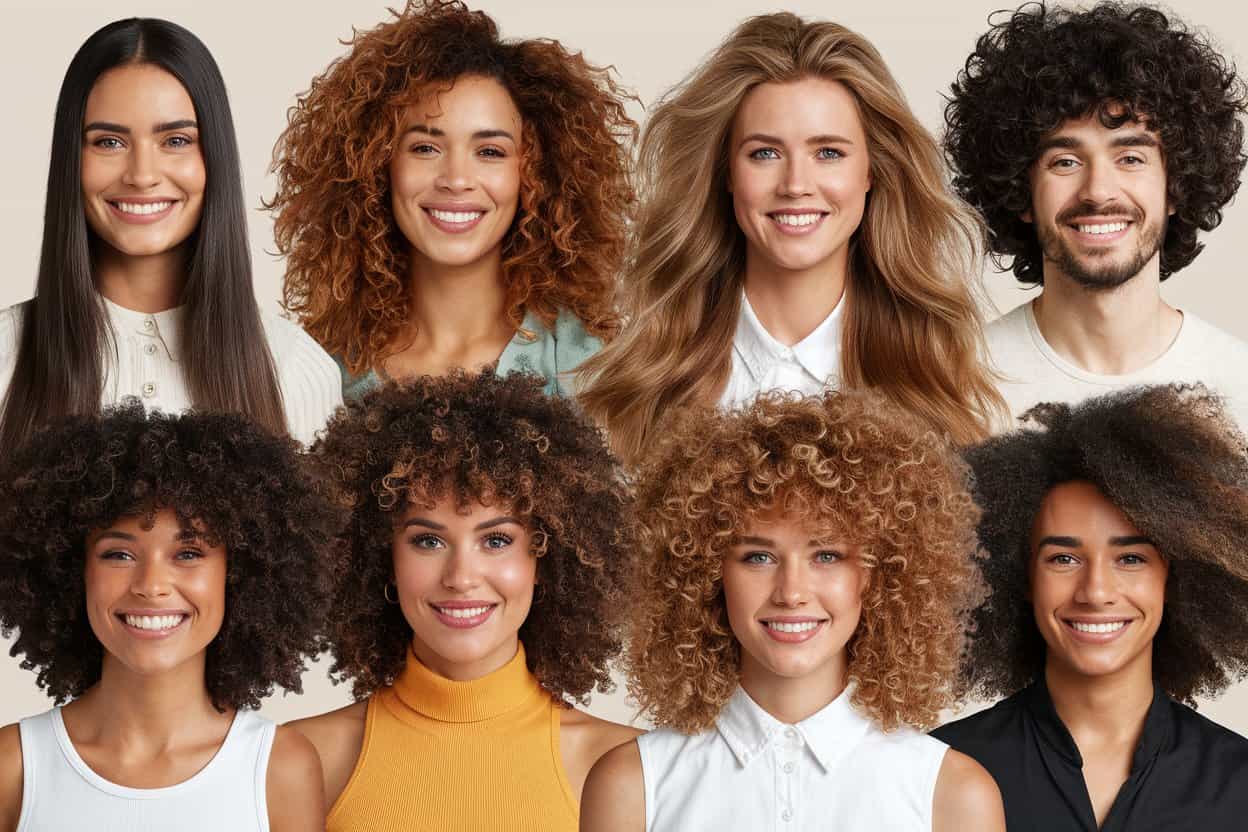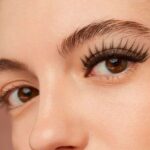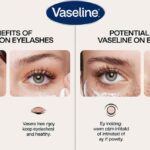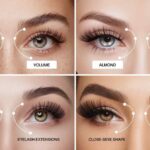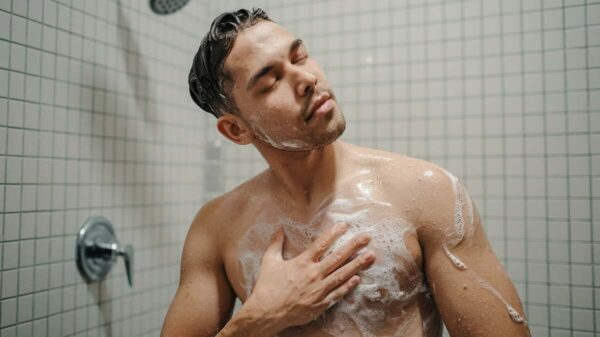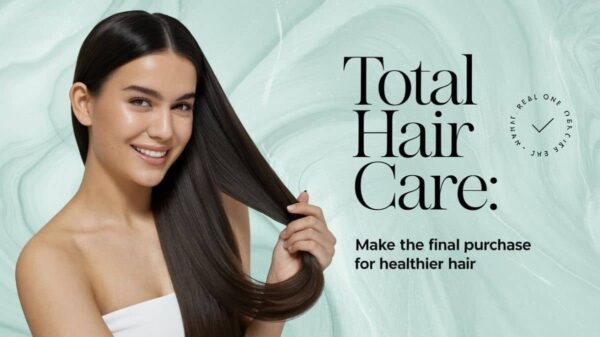Everyone’s hair is unique, and identifying your specific hair type is the foundation of a helpful hair care routine. Your hair type determines its texture, behavior, and how it responds to different products and styling methods. From straight to wavy, curly to coily, each hair types requires customized care to maintain its health, shine, and manageability.
Hair type doesn’t just influence how your hair looks, but also how it behaves in various climates and with different treatments. By understanding your hair’s characteristics—whether it’s straight, wavy, curly, or coily—you can better meet its needs and avoid common issues like frizz, dryness, and breakage.
This diligent guide will help you determine your hair type, offer specific care tips, and address concerns related to hair texture and porosity, ensuring you can maintain healthy, beautiful hair that suits your natural style.
Why Hair Type Matters
Understanding your hair type is essential because it affects everything from the products you use to the hairstyles you can achieve. Hair types are defined based on the curl pattern, which is influenced by your hair follicle’s shape. The four main groups are straight, wavy, curly, and coily, and each type has its subtypes that further define the texture and behavior.
Knowing your hair type can help you:
- Select the right products (shampoo, conditioner, styling creams)
- Choose appropriate hairstyles
- Better manage common hair concerns like frizz or dryness
How to Identify Your Hair Type
Straight Hair (Type 1)
Straight hair is defined as Type 1 and typically reflects light well, giving it a shiny appearance. However, it can often lack volume. Type 1 is divided into three subtypes:
- Type 1A: Extremely straight, fine, and flat hair.
- Type 1B: Straight but with a bit more body and medium texture.
- Type 1C: Straight with coarse texture, tends to hold a wave.
Care Tips for Straight Hair:
- Opt for volumizing shampoos to give your hair some lift.
- Use lightweight conditioners to avoid weighing down the hair.
- Avoid excessive oils that can make the hair greasy quickly.
Wavy Hair (Type 2)
Wavy hair falls between straight and curly, forming loose, defined waves.
- Type 2A: Fine, barely noticeable waves, easy to manage.
- Type 2B: More defined waves that may tend to frizz.
- Type 2C: Thick, coarse waves that are prone to frizz and require more moisture.
Care Tips for Wavy Hair:
- Use anti-frizz serums or creams to define waves without weighing them down.
- Choose a light, hydrating conditioner.
- Air-dry your hair to enhance natural wave patterns.
Curly Hair (Type 3)
Curly hair forms distinct ringlets and can range from loose to tight curls.
- Type 3A: Large, loose curls.
- Type 3B: Medium-sized curls with more volume.
- Type 3C: Tight, corkscrew curls that have significant volume and can be prone to dryness.
Care Tips for Curly Hair:
- Moisturizing products are essential to maintain curl definition.
- Avoid heat styling as much as possible.
- Use a diffuser when blow-drying to prevent frizz.
Coily/Kinky Hair (Type 4)
Coily hair, also known as kinky hair, features tight curls or zig-zag patterns.
- Type 4A: Soft, tightly coiled hair with an S-pattern.
- Type 4B: Tighter, more angular coils.
- Type 4C: The most delicate texture with tight, zig-zag curls prone to shrinkage.
Care Tips for Coily Hair:
- Opt for deep conditioning treatments to keep hair hydrated.
- Use leave-in conditioners and creams for detangling.
- Limit the use of heat tools and options for protective hairstyles.
Also Read: Wavy Hair vs Curly Hair | Key Differences & Care Tips
Hair Porosity and Texture
In addition to curl patterns, understanding your hair’s porosity and texture is crucial for creating a customized hair care routine. Hair porosity involves how well your hair absorbs and retains moisture.
| Porosity Type | Characteristics | Care Tips |
|---|---|---|
| Low Porosity | Hair cuticles are tight, moisture struggles to enter | Use lightweight oils, avoid heavy products |
| Medium Porosity | Balanced moisture absorption and retention | Regular conditioning, occasional deep conditioning |
| High Porosity | Easily absorbs moisture but struggles to retain it | Use heavier oils and butters, avoid frequent washing |
Knowing your hair texture (fine, medium, coarse) and porosity helps in selecting the right hair treatments and avoiding product build-up.
The Importance of Hair Care Products Based on Hair Type
Using hair products specifically designed for your hair type can make a significant impact on managing frizz, enhancing shine, and enhancing overall hair health. Each hair type has unique characteristics that influence how it responds to products, and understanding these differences will help you select the best solutions for your needs.
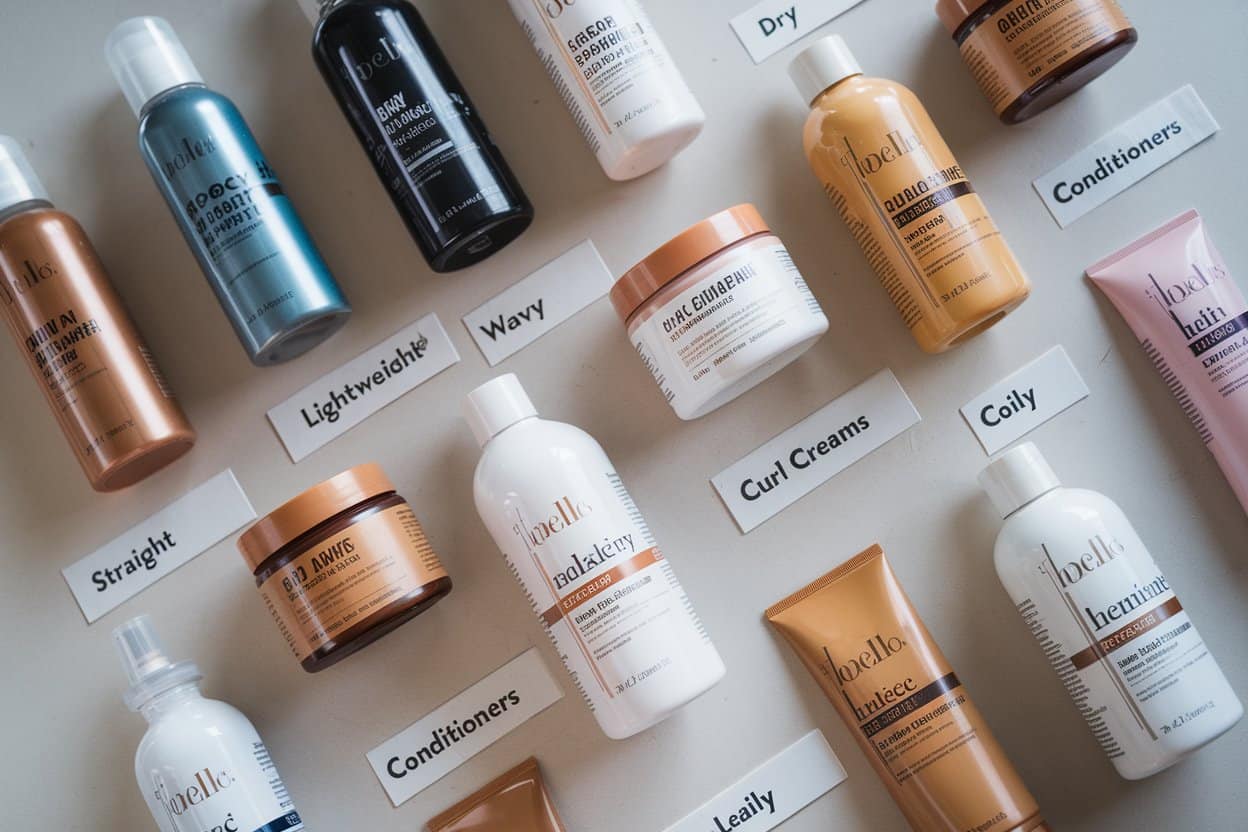
Straight Hair
Straight hair, due to its naturally smooth texture, tends to become oily faster. To maintain volume and prevent it from looking flat:
- Volumizing sprays and mousses are ideal for adding lift and movement.
- Dry shampoos can help manage oil buildup, especially at the roots.
- Lightweight conditioners can keep the hair smooth without weighing it down.
Wavy Hair
Wavy hair is more sensitive to frizz but benefits from lightweight moisture:
- Hydrating conditioners will keep waves defined without overwhelming them.
- Use anti-frizz creams to tame unruly waves and add definition.
- Avoid heavy oils that can flatten waves and make them look greasy.
Curly and Coily Hair
Curly and coily hair types require significant moisture to maintain their curl pattern and avoid breakage:
- Leave-in conditioners are crucial for hydration and detangling.
- Curl creams with ingredients like shea butter or coconut oil help define curls while locking in moisture.
- Coily hair benefits from deep conditioning treatments to prevent dryness and brittleness.
Common Hair Concerns- Frizz, Breakage, and More
Regardless of hair type, certain issues tend to arise more frequently in some textures than others. Let’s explore common challenges and how to address them based on hair type.

Frizz
Frizz is more common in wavy, curly, and coily hair, especially in humid environments where the hair absorbs excess moisture. It can result from dryness or damaged cuticles:
- Combat frizz with anti-humidity sprays and hydrating leave-in conditioners that help seal moisture into the hair shaft.
- Use serums or oils like argan oil to smooth down frizz and protect hair from humidity.
Breakage
Curly and coily hair types are more sensitive to breakage due to their structure, which tends to be more fragile:
- To reduce breakage, detangle hair using a wide-tooth comb and avoid harsh brushing.
- Limit heat styling and opt for protective hairstyles like braids or twists to minimize stress on the hair.
- Incorporate regular protein treatments to strengthen hair strands.
Oily Roots
Straight hair is more prone to oily roots since the scalp’s natural oils travel more easily down the hair shaft:
- Use dry shampoo to absorb excessive oil between washes and keep hair looking fresh.
- Clarifying shampoos can help remove product build-up and excess oil.
- Avoid heavy conditioners on the scalp and focus them on the ends of the hair to prevent weighing down your strands.
Also Read: Condish Healthy Hair Therapy | Strong, Shiny, Healthy Hair
By using the correct hair care products and practices based on your specific hair type, you can address common concerns and keep your hair looking its best. Understanding the unique challenges of each hair type will allow you to create a routine that enhances your natural hair while keeping it healthy and manageable.
Conclusion
No matter your hair type—whether straight, wavy, curly, or coily—the foundation of healthy, beautiful hair is understanding its unique needs. By identifying your hair type, porosity, and texture, you can craft a hair care routine that nourishes and protects your strands, allowing them to thrive. Recognizing that every hair type has distinct characteristics means you can tailor your approach, from selecting the right products to incorporating best practices for daily care.
Embracing your natural hair isn’t just about using the right products—it’s about appreciating its beauty in every state. Each hair types brings its own versatility, challenges, and charm, and caring for it effectively can enhance its natural shine and vibrancy. Whether you’re managing frizz, enhancing curl definition, or adding volume, your routine can empower your hair to look and feel its best.
Frequently Asked Questions (FAQs)
Hair textures are generally categorized into four main types: straight (Type 1), wavy (Type 2), curly (Type 3), and coily/kinky (Type 4), with subcategories within each type to represent varying patterns and curl tightness.
Hair type can be determined by examining the shape of your strands when they air-dry. Straight hair lies flat, wavy hair forms an “S” shape, curly hair has defined loops or spirals, and coily hair forms tight curls or zigzag patterns.
Curly and coily hair thrive with moisture, so using sulfate-free shampoos, deep conditioners, and leave-in products are essential. Avoid excessive heat and opt for protective styles to minimize breakage.
Straight and wavy hair types can be washed more frequently (every 2-3 days), while curly and coily hair benefit from less frequent washing (once a week or less), as they tend to be drier and require more moisture retention.
Common mistakes include over-washing, using harsh shampoos with sulfates, applying excessive heat without protection, skipping regular trims, and not using products suited to your specific hair type and texture.

